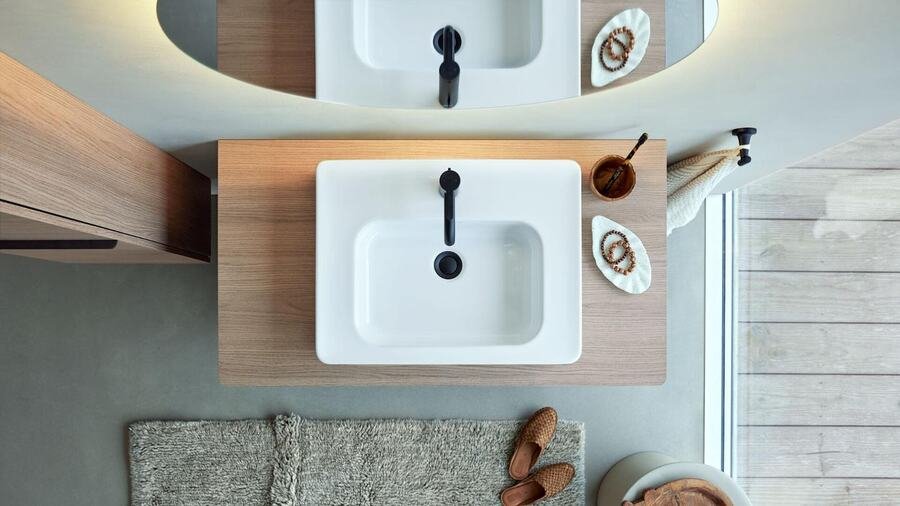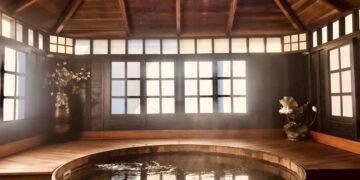The choice of materials in interior design plays a pivotal role in not only the aesthetics but also the functionality of your living space. When it comes to one of the most utilised fixtures in any home – the basin – the material it’s made from can drastically impact its lifespan and the overall look and feel of your bathroom. This in-depth guide examines various basin materials to help homeowners, interior designers, and DIY enthusiasts make informed decisions when selecting this essential element of bathroom design.
Types of Basin Materials
Basins, available in a myriad of styles and sizes, are commonly crafted from distinct materials. Each material has its own set of characteristics that distinguish it from the others.
Porcelain
Porcelain basins are synonymous with traditional and vintage design. The smooth, white finish not only looks timeless but also provides a hygienic surface that’s easy to clean. These basins generally feature a hard-wearing surface that’s resistant to both chemical and physical damage. However, it’s essential to handle porcelain with care as it can chip or scratch if hit with heavy objects.
Ceramic
Ceramic is a broad category of materials, but when applied to basins, it signifies a blend of clay, minerals, and water, fired at high temperatures. This versatile material allows for various shapes and designs, which offshoot numerous styles such as under-mount, vessel, and pedestal sinks. The glazing process makes ceramic basins impervious to water, providing a durable and stain-resistant surface.
Glass
Glass basins give off an air of luxury and modernity. They are made from tempered glass, which undergoes a special treatment to increase its strength, making it highly resistant to breakage. While they are stunning to look at, glass basins do require regular cleaning to maintain their shiny appearance and can be prone to scratches and water marks.
Stone
Natural stone basins, such as marble and granite, are known for their unique veining patterns and textures, which make each basin a one-of-a-kind piece. They can add a touch of opulence to a bathroom and are incredibly durable. However, they are porous and can be prone to staining if not sealed properly and maintained with the appropriate products.
Stainless Steel
Stainless steel basins are popular for their sleek, industrial aesthetic and their ability to integrate seamlessly with various décor styles. They are durable, resistant to stains, and easy to clean. One of the major considerations with stainless steel is that it can be noisier than other materials and may show water spots and fingerprints prominently.
Cast Iron
Cast iron basins are built to last. They are extremely durable and highly resistant to impact and scratches. The enamel finish on cast iron basins provides a protective layer against rust and makes them simple to clean. However, cast iron is heavy, so installation might require additional structural support, and any damage to the enamel can lead to rust formation if not repaired promptly.
Pros and Cons of Each Material
The choice of basin material depends on a variety of factors, including your lifestyle, design preferences, and budget constraints as part of your overall bathroom renovation project. It’s crucial to weigh the pros and cons of each material to find the best fit for your needs.
Durability
Cast iron and stainless steel basins are among the most durable options, standing up to heavy use and potential impacts. Ceramics and porcelain follow closely, while glass and some stone basins can be more prone to breakage.
Maintenance
Glass and some stone basins may require more maintenance due to their tendency to show watermarks and require specific care to prevent staining. Stainless steel, ceramic, and porcelain basins are generally low maintenance, requiring only routine cleaning to keep them looking their best. Stone basins also need to be re-sealed periodically.
Aesthetics
The choice here is highly subjective, based on personal taste and the overall design scheme of the bathroom. Each material brings a unique look and can be a statement piece or blend harmoniously with the surrounding décor.
Cost
The cost can vary significantly between materials. In general, glass and stone are on the higher end, while stainless steel and certain ceramics can be more budget-friendly options. However, it’s important to account for the total cost, including installation and long-term maintenance, to get an accurate view.
Factors Influencing Material Selection
Understanding which factors influence material selection is crucial in the decision-making process.
Style Preferences
Your personal design preferences and the aesthetic of your bathroom are key factors. Whether you’re aiming for a sleek, modern look or a classic, rustic feel, the basin material can help you achieve your desired ambience.
Functionality
Consider how you use your bathroom. If it’s a high-traffic area where durability is a priority, you might lean towards cast iron or stainless steel. A guest bathroom or powder room might benefit from the elegance of a glass or stone basin.
Budget Constraints
Your budget will inevitably play a role in the decision. It’s vital to find a balance between material quality, installation costs, and long-term maintenance to ensure you’re making a cost-effective choice.
Tips for Choosing the Right Basin Material
Arming yourself with knowledge is the first step in making the right choice for your basin. Here are some additional tips to guide you through the selection process.
Consider the Overall Design Theme
Your basin should complement the overall design theme of the bathroom. For instance, a rustic bathroom may benefit from a stone basin, while a minimalistic design could favour the clean lines of a stainless steel or a sleek ceramic model.
Evaluate Maintenance Requirements
Be honest about the level of maintenance you’re willing to commit to. High-maintenance materials can be a deal-breaker if you’re looking for a hassle-free option.
Budget Wisely
While it can be tempting to splurge on a luxurious basin, it’s important to ensure that your choice aligns with your budget. Don’t forget to account for installation costs and any necessary accessories.
Conclusion
Your basin material is a crucial element in your bathroom’s design and functionality. It’s not just a sink; it’s a part of your daily life and the style you’ve carefully curated. By understanding the various materials available and their respective pros and cons, you can select a basin that not only wows with its appearance but also stands the test of time.
FAQs
Here are some common questions related to basin materials.
What is the best material for a bathroom basin?
There isn’t a one-size-fits-all best material, as the “best” choice depends on your priorities and the specifics of your bathroom. However, materials like ceramic, stainless steel and cast iron are generally versatile and durable options suitable for many situations.
What is the most durable material for a bathroom sink?
Cast iron is renowned for its durability, making it an excellent choice if longevity and robustness are high on your list of requirements.
Which type of wash basin is best?
The best type of wash basin depends on various factors such as the size of the bathroom, the number of users, and personal preferences. Vessel sinks, for example, can add a modern or dramatic look to your bathroom, while undermount basins are subtle and great for easy cleaning. Ultimately, it’s about what suits your needs and the aesthetic of the space.
















